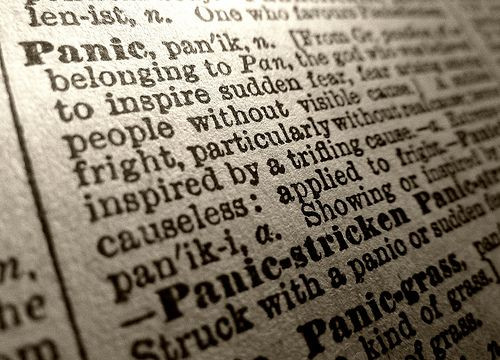Gene Behind Panic Disorder Discovered; Targeting Fear Memories Could Lead To Treatment

Scientists have discovered the precise gene that makes people more susceptible to panic disorder, along with the specific mechanism by which fear memories develop, according to a new study, leading researchers to claim that these discoveries may lay the foundation for future pharmacological breakthroughs.
The study pinpointed NTRK3, a gene responsible for encoding a protein that helps in brain formation and keeping neurons connected, as playing definite roles in regulating a person’s genetic likelihood of suffering from panic disorder. In the United States alone, roughly six million people suffer from the disorder, according to the Anxiety and Depression Association of America. Researchers from the Center for Genomic Regulation (CGR) now claim their study could give scientists the opportunity to develop drug therapies that target the mechanisms of fear production directly, without the collateral side-effects of current treatment options.
"We have observed that deregulation of NTRK3 produces changes in brain development that lead to malfunctions in the fear-related memory system,” Mara Dierssen, head of the Cellular and Systems Neurobiology group at the CGR, said in a statement. “In particular, this system is more efficient at processing information to do with fear, the thing that makes a person overestimate the risk in a situation and therefore feel more frightened and, also, that stores that information in a more lasting and consistent manner.”
In other words, scientists found the gene that’s responsible for keeping the hippocampus — the part of the brain that forms memories — connected to the amygdala, which, among other things, regulates fear responses. As panic disorders are (cognitively speaking) near perfect false alarms of actual trauma, switching off the NTRK3 gene disables that connection, and therefore, the fear-related memory system that goes with it.
Panic disorder falls under the ADAA’s umbrella category of anxiety. People who suffer from panic disorder often report an impending sense of doom, nervous sweating, the need to escape or leave, trembling, and a sense of unrealness, or detachment from reality. While there is no cure for panic disorder, treatment options range from cognitive therapies to pharmaceutical drugs. However, these drugs must often blanket a range of gene targets, as the present research offered poor insights into the mechanisms underlying the disorder. Now, researchers say, the disorder could see revelatory new methods of treatment.
"The problem is that drugs have many side-effects and psychotherapy is not really aimed at specific moments in the process of forming and forgetting fear memories,” explained Davide D'Amico, a Ph.D student at the CGR and a co-author of the study. “In our work we have defined a specific creation mechanism for these fear memories that could help in the development of new drugs and, also, in identifying the key moments for applying cognitive therapy.”
Panic disorder arises most often in people between 20 and 30 years old, and is twice as common in women compared to men. Prior research suggests panic attacks, one of the hallmark symptoms of the disorder, may find treatment through calming techniques and through the acknowledgement of certain symptoms. Sufferers are encouraged to itemize and rank the situations that most often arise and precede panic attacks.
Panic disorder has some genetic roots, although stress and environmental factors play key roles. The present study’s researchers state their discovery of the “overactivation of the hippocampus and altered activation in the amygdala circuitry, resulting in exaggerated formation of fear memories,” could one day open promising doors of treatment for the millions around the world who suffer from the disorder.
Source: Santos M, D’Amico D, Spadoni O. Hippocampal Hyperexcitability Underlies Enhanced Fear Memories in TgNTRK3, a Panic Disorder Mouse Model. Journal of Neuroscience. 2013.
Source: Santos M, D’Amico D, Spadoni O. Hippocampal Hyperexcitability Underlies Enhanced Fear Memories in TgNTRK3, a Panic Disorder Mouse Model. Journal of Neuroscience. 2013.
Published by Medicaldaily.com



























